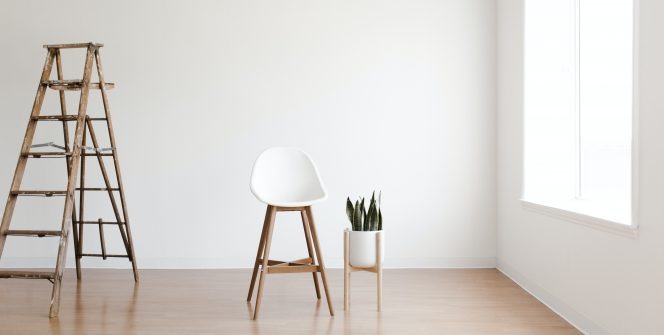Flooring is the foundation of any beautiful room. Nowadays there are numerous options available in the market and one of the most durable and eco-friendly is Linoleum or Lino flooring whose invention dates to 1860. It can be customized into various colors, contemporary or traditional designs, and is very easy to install and replace.
Lino owes its cushioning property to the mix of material comprising pine resins linseed , cork powder, wood flour, and limestone dust. It comes in the form of sheets , square and rectangular shapes.
To save it from scratches and dullness due to wear and tear, a simple protective coating can be added to increase its longevity.
Like every coin has two sides, the usage of linoleum flooring has its own pros and cons. Let us discuss them in detail.
- Do it Yourself – Unlike the past when only lino sheets were the only option, with time and research-based innovation, it also comes in Glue-Down tiles and Click-Lock format which is user-friendly to an extent that there is no need to hire outside labour for the same and can be installed on its own. Also due to the increase in its usage now they are also available from the small size of 12×12 inch to as large as 20×20 inch in different designs and formats.
- Economical and Affordable – Lino flooring is far economical as compared to marble, wooden, tile, and vinyl flooring. Even the labour cost of installing and dismantling it is lesser than other flooring options . The price varies as per thickness that could be anywhere between 1.5 mm to 5 mm and quality and design of the lino sheet or tiles .
- Versatility– The best part about choosing lino over other options is that it is waterproof, stain-resistant, and can be used on walls and floor both. Due to its thick cushioning, it is quieter and noise-free while walking over the floor. They come in several patterns and designs that cater to the likes of many.
- Eco-friendly– Most of the flooring materials are made of harmful chemicals and causes pollution during their manufacturing process but unlike others, Lino is biodegradable and is made of renewable material that not only decreases its carbon footprint as it doesn’t end up in the landfills but also makes it an environmentally friendly choice for the user. Thus, it helps in sustaining the environment too.
- Easy to Maintain– As the flooring is thick, it is easier to maintain and only takes normal cleaning and moping, which makes it user-friendly and adds on to its appeal. Apart from this Lino has self-healing properties due to the presence of colour in each layer and no difference can be found after minor repair.
- Style– Unlike vinyl and other laminates where only the upper coating is done , the pigments in lino are dispersed within and that helps in camouflaging any damage in the form of scratches or cuts. So, the style quotient remains the same for a longer period.
- Child friendly– Most of the flooring options are not healthy for your child due to their properties to attract allergic dust particles and kids may catch an infection while crawling and playing on the floor.
CONS OF LINO FLOORING
- Wear and Tear– Constant exposure to the sunlight leads to fading and forming of a yellow colour layer on the flooring but this can be avoided by applying a protective coating that is easily available.
- Precaution is better than cure– It is advisable to smooth out the floor before installing lino flooring to avoid uneven surfaces that may lead to cracks and damages.
- Slippery – The newly installed flooring could be slippery due to the wax coating
- Prone to retain Moisture – Linoleum tends to retain moisture and should be avoided to be installed in spaces that may have high humidity, water leakage or spillage. The area should be dry and free of any seepage.

Leave a Reply